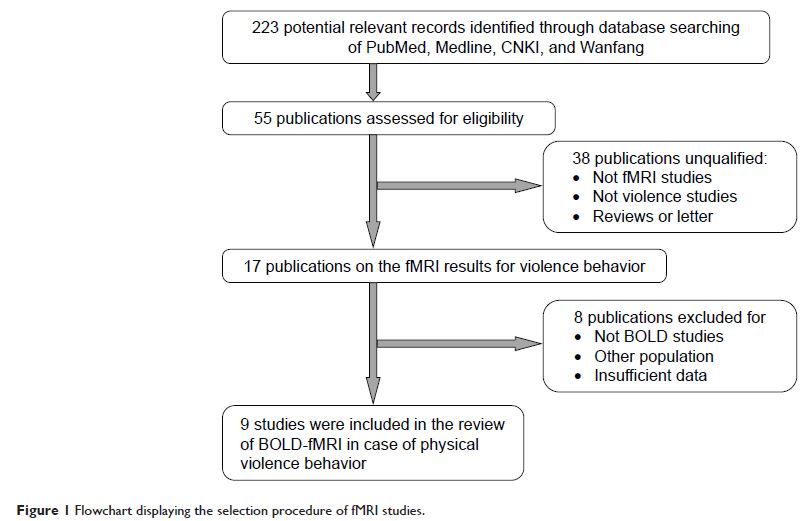9 9 6 5 3
论文已发表
注册即可获取德孚的最新动态
IF 收录期刊
- 3.3 Breast Cancer (Dove Med Press)
- 3.4 Clin Epidemiol
- 2.5 Cancer Manag Res
- 2.9 Infect Drug Resist
- 3.5 Clin Interv Aging
- 4.7 Drug Des Dev Ther
- 2.7 Int J Chronic Obstr
- 6.6 Int J Nanomed
- 2.5 Int J Women's Health
- 2.5 Neuropsych Dis Treat
- 2.7 OncoTargets Ther
- 2.0 Patient Prefer Adher
- 2.3 Ther Clin Risk Manag
- 2.5 J Pain Res
- 2.8 Diabet Metab Synd Ob
- 2.8 Psychol Res Behav Ma
- 3.0 Nat Sci Sleep
- 1.8 Pharmgenomics Pers Med
- 2.7 Risk Manag Healthc Policy
- 4.2 J Inflamm Res
- 2.1 Int J Gen Med
- 4.2 J Hepatocell Carcinoma
- 3.7 J Asthma Allergy
- 1.9 Clin Cosmet Investig Dermatol
- 2.7 J Multidiscip Healthc

有 fMRI 和 COMT 基因的中国精神分裂症患者的攻击行为风险评估
Authors Tang X, Jin J, Tang Y, Cao J, Huang J
Received 1 November 2016
Accepted for publication 19 December 2016
Published 7 February 2017 Volume 2017:13 Pages 387—395
DOI https://doi.org/10.2147/NDT.S126356
Checked for plagiarism Yes
Review by Single-blind
Peer reviewers approved by Dr Papan Thaipisuttikul
Peer reviewer comments 2
Editor who approved publication: Professor Wai Kwong Tang
Background: Blood–oxygen-level dependent functional magnetic resonance imaging
(BOLD-fMRI) maps cerebral activity by the hemodynamic response. Catechol-O -methyltransferase (COMT ) gene is involved in the
metabolism of dopamine. It is reported that both of these can be used to assess
the aggression risk in patients with schizophrenia. However, these methods to
assess the aggression risk patients with schizophrenia have not been
established in China. Therefore, we deliver here a systematic review and
meta-analysis based on the studies dealing with Chinese patients.
Method: Nine fMRI studies and 12 gene studies were included.
The data of each study were extracted and summarized. Odds ratios with 95%
confidence intervals were estimated on allele, dominant, and recessive models.
Publication bias was evaluated by Begg’s funnel plot.
Results: Positive BOLD-fMRI values in the lower central neural
system (CNS) and negative values in the high-level CNS were observed in the
patients with aggression risk. A strong association was derived from the
recessive gene model of COMT polymorphism rs4680 and risk in
aggression behavior (odds ratio =2.10). No significant publication bias was
identified.
Conclusion: Aggression behavior in patients with schizophrenia can
be indicated by positive BOLD-fMRI values in the lower CNS and negative values
in the high-level CNS and by a recessive gene model in COMT polymorphism
rs4680. A combined test of fMRI and COMT gene could
increase the predictive value.
Keywords: aggression, schizophrenia, Chinese,
fMRI, COMT, meta-analysis
